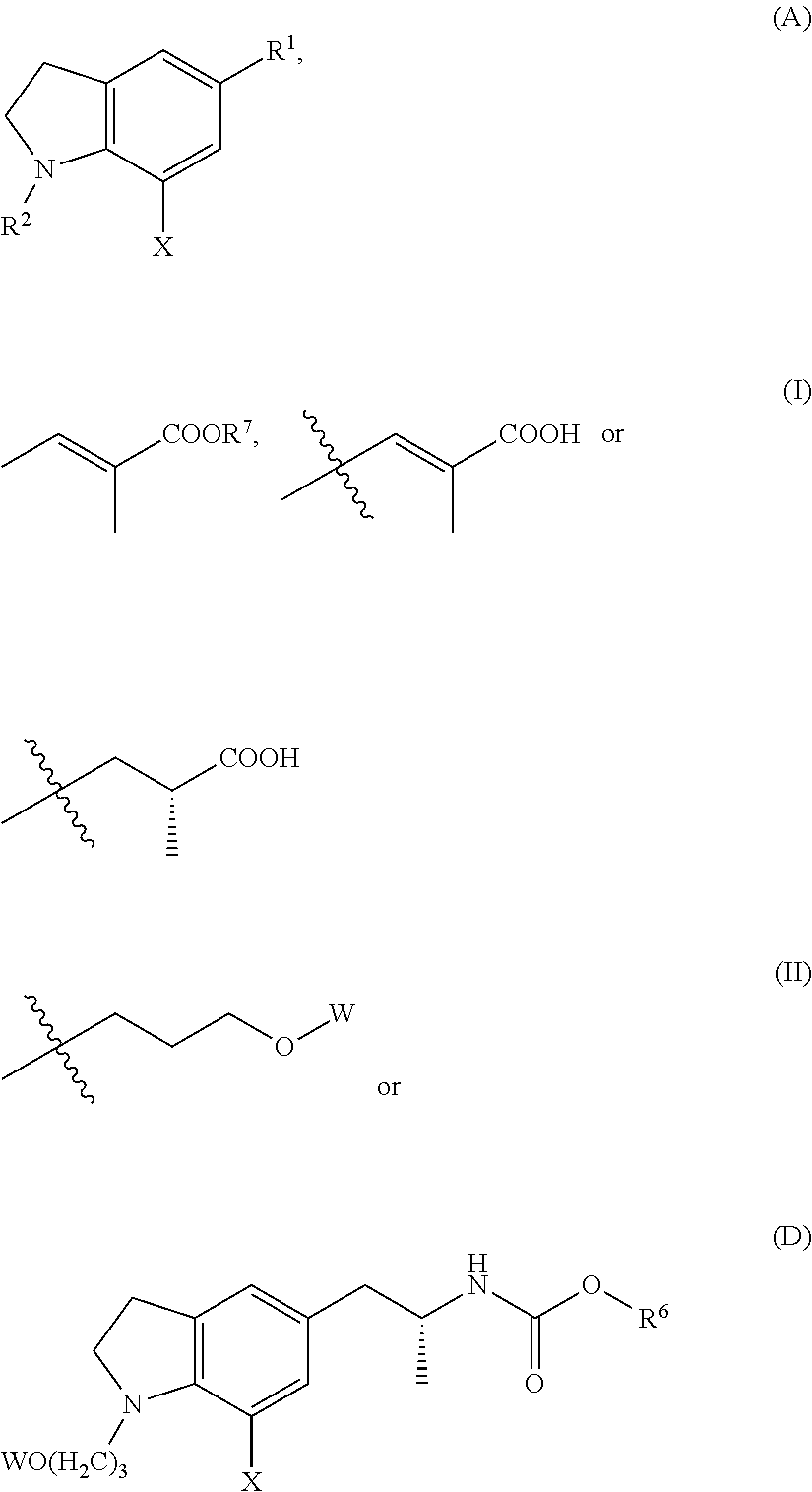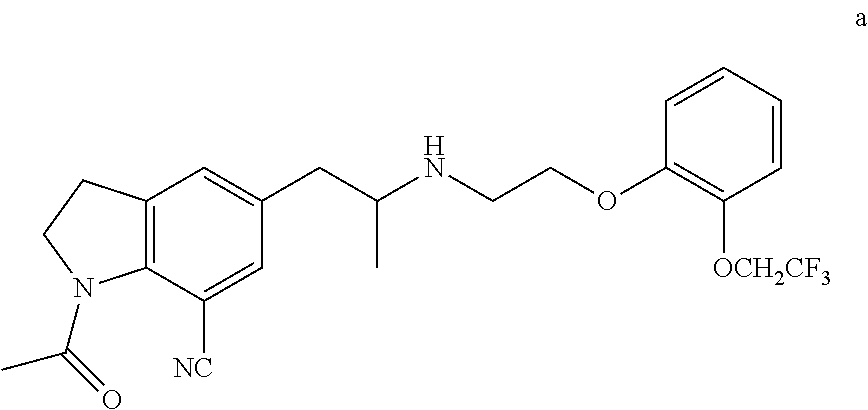Silodosin Intermediate and Preparation Method Therefor
- Summary
- Abstract
- Description
- Claims
- Application Information
AI Technical Summary
Benefits of technology
Problems solved by technology
Method used
Image
Examples
example 1
The Preparation of the Compound of formula A-1-1 (W is Acetyl, X is Bromine)
[0099]
[0100]1-(3-(acetyl)propyl)indole-5-formaldehyde (2.0 g, 8.10 mmol) and dichloromethane 40 ml were charged successively into a 100 ml two-neck round-bottom flask. The mixture was cooled to −10-10° C. Bromine (1.36 g, 8.51 mmol) was added drop wise at this temperature. After addition was complete, the reaction mixture was stirred at −10˜10° C. The reaction was monitored by TLC until all start raw materials were consumed. After the reaction was complete, saturated aqueous solution of 5 ml sodium sulfite and 10 ml sodium bicarbonate were added with stirring for further 10 minutes. The layers were separated and the organic layer was washed with saturated aqueous solution of 15 ml brine and concentrated to afford 2.57 g the compound of formula A-1-1, with a molar yield of 97.3%.
[0101]The compounds in example 2 to 12 were prepared according to the procedure described in example 1, wherein W was selected from ...
example 13
The Preparation of the Compound of formula of A-2-1 (W is Acetyl, X is Bromine, R7 is Methyl)
[0102]
[0103]Compound A-1-1 (2.0 g, 6.14 mmol), phosphonium ylide (3.21 g, 9.21 mmol) and methylbenzene 40 ml were charged successively into a 100 ml one-neck round-bottom flask. The mixture was heated to 90˜100° C. under nitrogen and maintained at this temperature. The reaction was monitored by TLC until all start raw materials were consumed. After the reaction was complete, the reaction mixture was concentrated under reduced pressure to give a residue which was then purified by column chromatography to afford 1.96 g the compound of formula A-2-1, with a molar yield of 80.7%.
[0104]The compounds in example 14 to 24 were prepared according to the procedure described in example 13, wherein W was selected from various hydroxyl-protecting groups, X is bromine, R7 was selected from various carboxyl-protecting groups, and the results were summarized in following table:
YieldExampleProductWR7(%)m / z14...
example 25
The Preparation of the Compound of formula A-3-1 (W is Benzyl, X is Bromine)
[0105]
[0106]Compound of formula A-2-12 (2 g, 4.37 mmol), 50% aqueous solution of potassium hydroxide (0.73 g, 6.48 mmol) and methanol 30 ml were charged into a 100 ml one-neck round-bottom flask. The mixture was heated to reflux. The reaction was monitored by TLC until all start raw materials were consumed. After the reaction was complete, the reaction mixture was concentrated to dryness to give a residue which was then purified by column chromatography to afford 1.84 g the compound of formula A-3-1, with a molar yield of 97.9%.
[0107]1H NMR (400 MHz, DMSO): δ=1.80-1.87 (m, 2H), δ=2.02 (s, 3H), δ=2.96 (t, J=8.8 Hz, 2H), δ=3.49-3.54 (m, 4H), δ=3.61 (t, J=7.6 Hz, 2H), δ=4.47 (s, 2H), δ=7.19 (s, 1H), δ=7.27-7.37 (m, 6H), δ=7.41 (s, 1H), δ=12.26 (s, 1H).
[0108]The example 25 was repeated by subject the products obtained in example 20 to 24 as starting materials to hydrolyzation, to obtain the compounds in examples...
PUM
 Login to View More
Login to View More Abstract
Description
Claims
Application Information
 Login to View More
Login to View More - R&D
- Intellectual Property
- Life Sciences
- Materials
- Tech Scout
- Unparalleled Data Quality
- Higher Quality Content
- 60% Fewer Hallucinations
Browse by: Latest US Patents, China's latest patents, Technical Efficacy Thesaurus, Application Domain, Technology Topic, Popular Technical Reports.
© 2025 PatSnap. All rights reserved.Legal|Privacy policy|Modern Slavery Act Transparency Statement|Sitemap|About US| Contact US: help@patsnap.com



